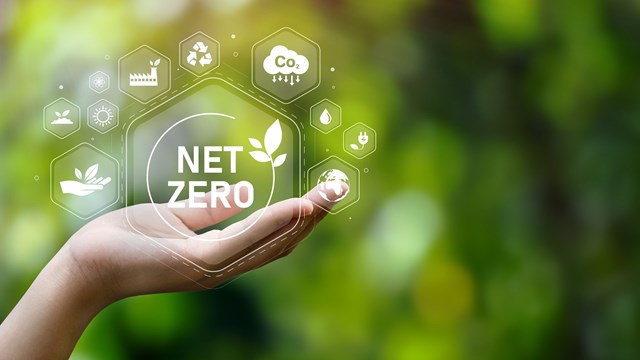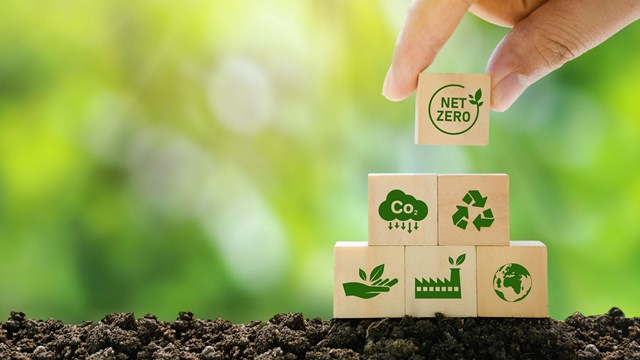
Kermit the Frog once sang, "It's not easy being green." In truth, New York-area co-ops and condominiums are discovering that "going green" is easier and more cost-effective than ever before. No, you won't be seeing a rash of high rises with elaborate landscaping or emerald paint jobs. In common language, to be "green" is to be ecologically and environmentally conscious. Green buildings conserve resources, minimize pollution, and in many cases save their residents money. Thanks to both private and government programs, residential buildings can develop strategies for greening their property, and then get the funds to pay for program implementation.
According to the New York State Department of Environmental Conservation's Web site, "Green buildings are more Earth-friendly by virtue of greater energy efficiency, cleaner air, utilization of recycled materials, and incorporation of renewable and energy efficient power generation systems. They minimize environmental impact and maximize the preservation of open space."
The Green Building Council also has a rating system called Leadership in Energy and Environmental Design (LEED), which sets the standard for what makes a building "green." The areas of focus include: whole building cleaning and maintenance issues including chemical use; ongoing indoor air quality, energy and water efficiency, recycling programs and facilities, exterior maintenance programs, and lighting performance.
Lewis Kwit is president of Energy Investment Systems, a Manhattan-based consulting company that implements energy efficiency and conservation systems and technology. Says Kwit, "Making a building more productive, more valuable, and more economic is also making it green." For example, during periods of excessive electric use, the city's oldest and least-efficient power plants must be put to use. By taking energy conserving measures, buildings can reduce the total amount of juice needed by the city, and thus help prevent the pollution using these old plants generates.
In May 2000, New York became the first state to offer an incentive package to developers who build environmentally-conscious commercial and apartment buildings. The so-called "Green Building Tax Credit" allows builders who meet energy goals and use environmentally preferable materials to claim up to $3.75 per square foot for interior work and $7.50 per square foot for exterior work against their state tax bill. To qualify for the credit, a building must meet certain requirements for energy use, materials selection, waste disposal and water use, and have the work certified by a licensed engineer or architect.
Buildings undergoing a complete rehabilitation can take advantage of the credit too, if they bring their energy use below 75 percent of the permitted use according to the New York State Energy Code. In addition, ventilation and heat comfort must meet certain requirements, and building materials, finishes and furnishings must contain high percentages of recycled content, and cannot exceed certain levels of toxicity.
For existing buildings, the financial benefits of greening come in the form of savings. Many capital improvement and energy conservation methods will qualify for J-51 property tax abatements, if properly applied for. The New York State Energy Research and Development Authority is a public benefit corporation funded by the monthly electricity surcharge paid by consumers. NYSERDA offers subsidized research to buildings seeking greening strategies. "We can provide feasibilty studies and materials analysis," says Craig Kneeland, NYSERDA project manager. "If the building implements the suggested changes within two years, the entire cost of the study is reimbursed."
The cost of a green study varies, depending on how comprehensive it is. A very basic study starts at about $1,500 and an in-depth evaluation can run from $10,000 to $15, 000. Environmental consultants can evaluate the efficiency of all building systems, from lighting to HVAC, as well as the toxicity of finishes, paints and other materials that can affect indoor air quality. Once the verdict is in, NYSERDA has several programs to help buildings pay for making the recommended changes. The group's Smart Equipment Choices Program makes up to $1,500,000 available to install energy-efficient equipment. The one-step application process can provide pre-qualified incentives for lighting, motors, HVAC, transformers, variable speed drives, high-efficiency windows, plate pre-coolers and occupancy sensors.
"If the building is served by Con Ed, we can provide funding incentives for energy conserving methods," says Kneeland. "We'll provide 50 to 70 percent of costs, up to $400,000 per building." In addition, NYSERDA provides low-interest loans through local lenders at 4.5 percent below market rate, for up to half a million dollars.
The greatest savings to a building can come through energy conservation. Ashok Gupta, director of the Air and Energy Program at the Natural Resources Defense Council recommends re-commissioning building equipment. "Your HVAC system should be less than ten years old, and [kept] well-tuned to maximize efficiency. In terms of cost-effectiveness, this will realize energy savings immediately and has the fastest payback."
Lighting and fixture changes have a slightly longer payback. Using natural light as much as possible conserves energy - and costs nothing, compared to retrofitting all the common areas in your building with more efficient fluorescent lights. Small measures, like occupancy sensors that shut off lights after six minutes when a room remains vacant can yield immediate energy savings.
"If you are already replacing the windows," says Gupta, "the incremental difference to get better windows will pay for itself quickly."
For those seriously committed to being green for good, installing rooftop solar cells is 100 percent tax deductible for buildings - unfortunately, it's also a tremendous initial outlay with very slow returns for most apartment buildings. For example, the Con Ed current necessary to run ten 100-watt light bulbs for an hour costs about twenty cents. A solar collector capable of running those same bulbs would cost about $12,000 to install, so hip and progressive as they sound, solar cells could take years to pay for themselves.
Kwit is a big fan of a special submetering program called "real-time pricing." Under this plan, consumers pay for electricity by the hour, with price per hour dictated by the time of day. At the peak time between three and seven p.m., electricity is the most costly. Consumers wishing to save can perhaps decide to put off tasks like vacuuming and laundry until non-peak times. "You could save ten percent just by turning things off," adds Kwit.
George Reyes-Montblanc, president and chairman of the Housing Development Fund Company (HDFC) Council represents 25,000 limited-equity and low-income co-op households. "We've taken the lead in terms of energy efficiency," says Montblanc. "We were not interested in conservation, we wanted to save money. Then we saw that saving money also meant cutting down on the pollution generated by the old Con Ed plants."
Reyes-Montblanc continues, "We use the latest technology as far as fixtures, et cetera, and we're trying to make the apartment-dwellers aware of their consumption, so they will take control of their usage. By doing all these things, we are becoming a green building and saving money."
Before embarking on any major project, Reyes-Montblanc recommends consulting with a specialist on J-51 tax abatements to help navigate the sometimes-complicated web of regulations and prohibitions. "Things done in a certain way may not qualify, but [the same project] done differently could. As a rule of thumb, anything that improves the structure or increases conservation efforts will qualify for a property tax abatement of 80 percent of the capital, spread out over ten years."
Another aspect of a green building affects quality of life more than shareholder wallets. Green buildings use minimal toxins in their cleaning products, paints and carpets. Some fabrics give off air contaminants when the sun hits them, for example. "Where paints and adhesives with low volatile organic compounds are used, overall air is better," says Kneeland. "There is strong evidence linking green buildings with increased productivity [among residents]." To encourage the use of non-toxic, non-allergenic building materials and finishes, NYSERDA also has a low-interest loan program offering up to $500,000 at 4.5 percent below market rate for projects that use green materials.
"There are other things that people would pay more for, [rather] than a building just because it's green," says Kwit. "A name architect may be more valuable. But a green apartment will sell faster."
"A green building has improved value as a property and is a more attractive place to live," says Reyes-Montblanc. "People want to live in healthy buildings. Everyone wants clean air and a good quality of life."






Leave a Comment